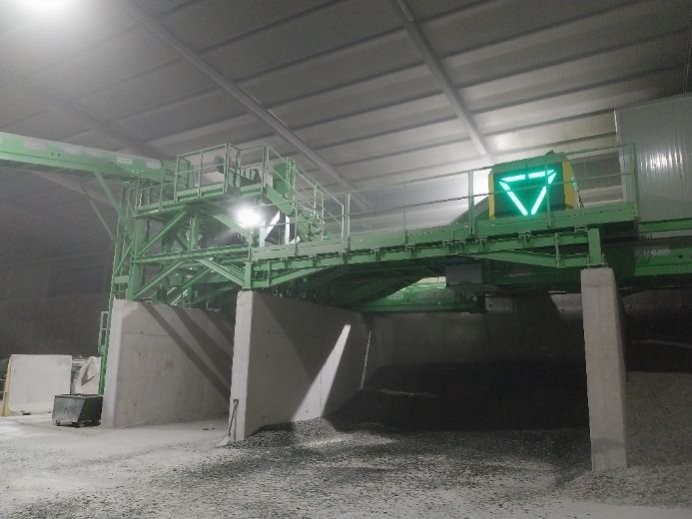New glass processing line at the Puerto de Sagunto plant
FCC Ámbito launches a new glass treatment line at its plant in Puerto de Sagunto (Valencia). The new line, which involved an investment of over 1 million euros, incorporates the latest optical color separation technologies, enabling higher recovery rates of glass. Specifically, the goal of this technological upgrade is to achieve a CSP (Ceramics, Stones, and Porcelains) separation rate above 92%, and ensure that more than 90% of recovered white glass reaches a purity level above 98%.
Additionally, the new line includes advanced automation systems to optimize process control, thereby improving overall efficiency.
With this new line at the Puerto de Sagunto plant, FCC Ámbito completes the investment cycle initiated years ago to equip all its glass recycling facilities with the necessary processing lines to separate white glass fractions from all incoming glass waste streams, increasing the recovery rate of these resources for reintroduction into production cycles.
FCC Ámbito has been active in the glass recycling sector for over 40 years. In addition to processing household glass packaging, it provides services to various industries that generate glass waste, such as glassworks, bottling plants, car scrapyards, and more. In 2024, FCC Ámbito processed over 170,000 tons of various types of glass at its facilities.
FCC Ámbito is a subsidiary of FCC Servicios Medio Ambiente, specializing in the comprehensive management of industrial and commercial waste, by-product recovery, and soil decontamination. It operates a total of 39 treatment centers across Spain and Portugal, with more than 68 processing lines ensuring the functionality of its facilities.
FCC Servicios Medio Ambiente is the FCC Group company that has been providing municipal services and comprehensive waste management for 120 years, serving over 66 million people in 5,200 municipalities worldwide. The company manages 24.6 million tons of waste and produces 6.35 million tons of secondary raw materials and refuse-derived fuel. It operates more than 800 waste management facilities, nearly 200 of which are environmental complexes dedicated to waste treatment and recycling, including 15 waste-to-energy projects with a capacity of 3.6 million tons per year and 435 MW of non-fossil electricity.


